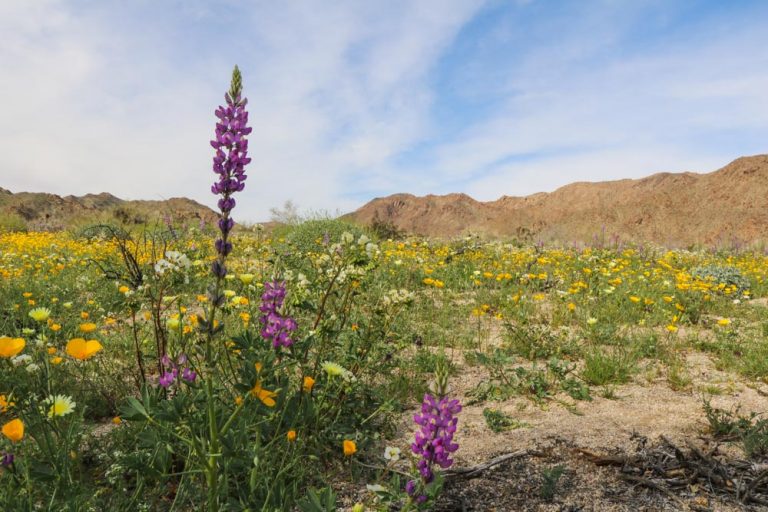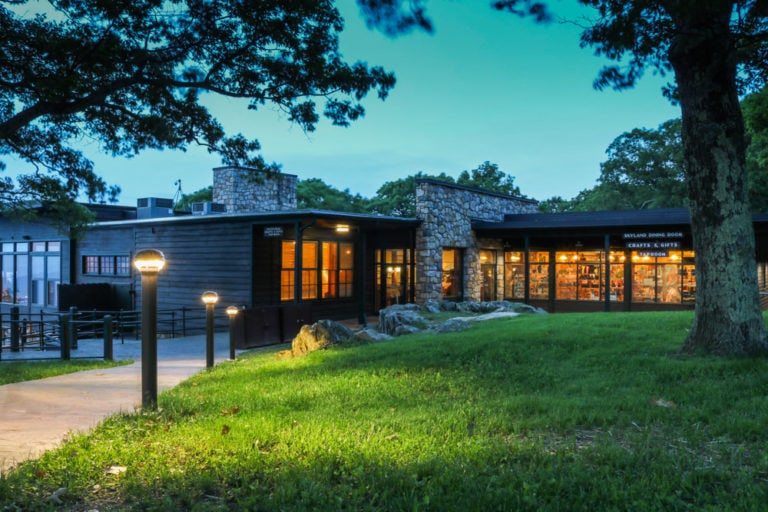6 Best National Parks to See Wolves in the USA
In many cultures around the globe, wolves have always been a source of both fascination and fear. Once revered and respected… then hated and hunted… now both, wolves are a symbol of wildness arguably unlike any other animal in the world.
Nowadays, there are half a dozen awesome national parks where you can still (or once again) see wolves in America.
6 Best National Parks to See Wild Wolves in the USA
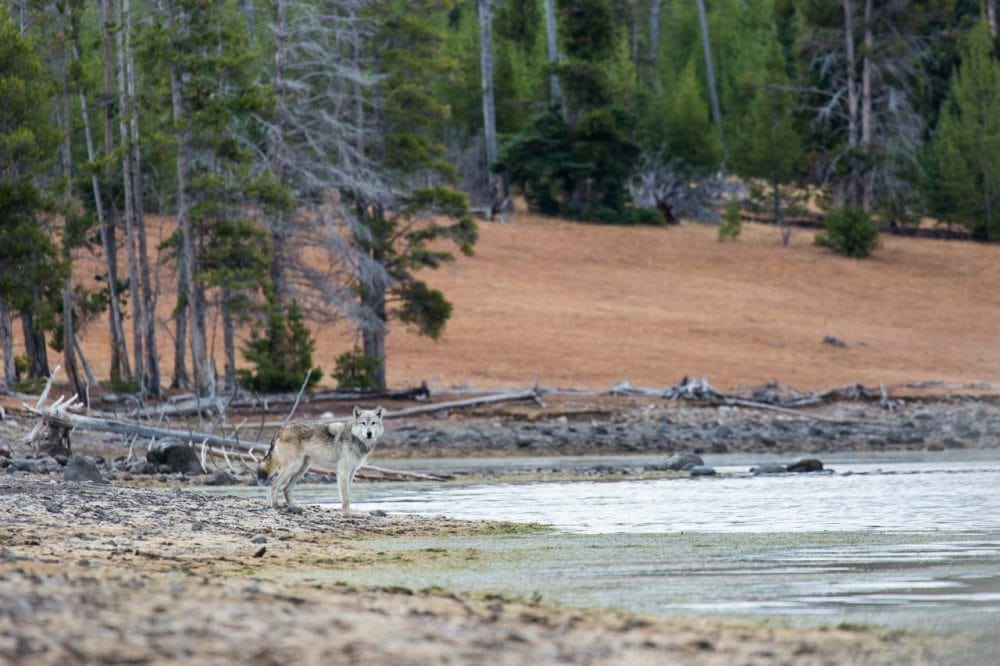
Found in both Eurasia and North America, these often-misunderstood animals are highly social and intelligent, a keystone and indicator species in their ecosystem.
Although they once roamed much of the continental United States and Alaska, you can now see gray wolves (Canis lupus), also known as timber wolves, in the wild in only a handful of U.S. states.
Today, wolves represent strength, resilience and wildness for many people. The respect most Americans (and modern-day Europeans) now have for wolves is, however, a very new phenomenon.
Although the animal was highly revered and respected in numerous ancient cultures, the wolf’s reputation has been increasingly negative—to put it mildly—in the past one thousand years or so.
And that’s not only a shame; it’s also completely incorrect. It’s been said that wolves may just be the most polarizing and misunderstood animal species ever encountered by humankind.
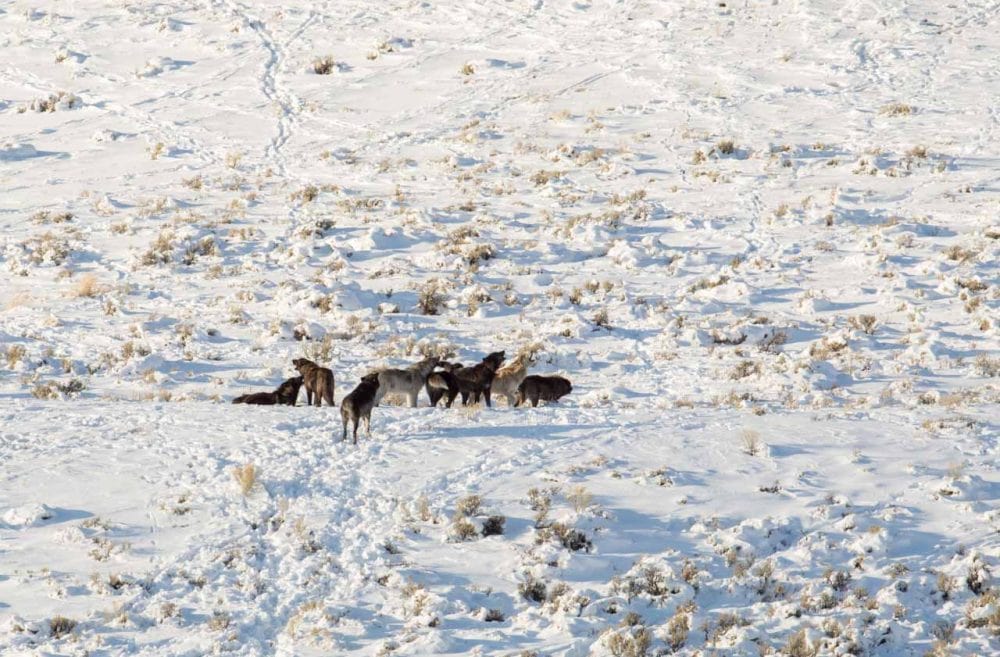
However, wolves are also unquestionably one of the most fascinating animals in the world. They’re curious and resilient, social and smart, excited to watch and not dangerous. In more than one way, they’re human-like.
After all, there’s a reason why gray wolves were the very first domesticated animals. There’s always been a connection, a bond between wolves and people.
And that’s exactly why you should visit one of the national parks with wolves below. Seeing one is an exhilarating, primeval even, experience.
But first, let’s look into the relatively recent evolution of the relationship between wolf and man…
This post featuring the best national parks to see wolves contains affiliate links. You can read more about our Terms of Use / Disclosure here.
A Brief Recent History of Gray Wolves and Humans
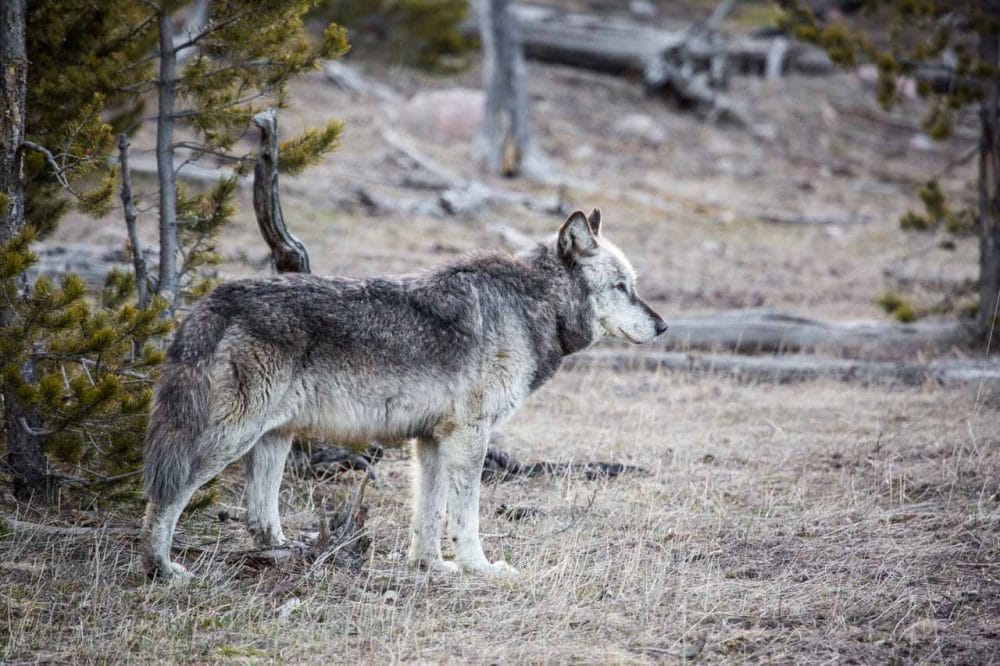
Wolves in Ancient Mythology & Medieval Fairy Tales
In Europe’s legends and sagas, from Ancient Rome to Norse mythology, the gray wolf was a revered animal, a creature linked to everything from war and agriculture to light and order to the only defense against evil.
Many Native American tribes, too, featured the wolf as a prominent actor in their myths and stories. From the Native American Pawnees to the Ancient Chinese, cultures the world over called Sirius, the brightest stay in the sky, the “wolf star” or “heavenly wolf.”
Additionally, people’s respect for, fascination with and fear of wolves is shown clearly by a common concept that’s found in various cultures—people turning into wolves. This goes as far back as Ancient Greek and Navajo mythology, but is most well-known as medieval Europe’s folkloric werewolves.
Medieval Europe is when the main narrative starts to change. That’s when wolves’ reputation changed. They went from creatures to be admired and respected to animals to be feared and loathed.
Great examples of this are fables and fairy tales like Little Red Riding Hood, The Wolf and the Seven Young Goats and The Three Little Pigs. In these stories, the villain is always a wolf, which severely damaged the animal’s reputation in Europe and, later, North America.
From then on, the relationship between humans and wolves has been complicated and delicate.
Wolf hunts are still common in many places where wolves are present, from Russia to America, often motivated by wolf predation on livestock like sheep, goats, chicken and cattle.
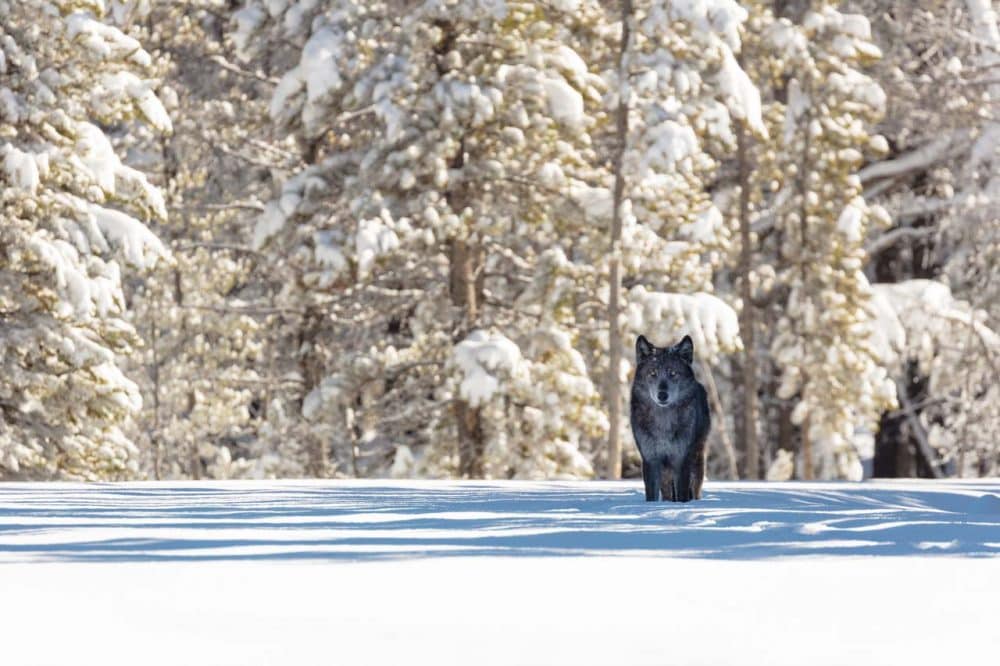
Gray Wolves in America
In America specifically, this clash of species, fueled by a historic hatred of wolves by white settlers and known as the “American Wolf Wars”, resulted in the near-eradication of wild gray wolves.
Once one of North America’s most successful land mammals, wolves have now been exterminated from over 90% of their historical range in the continental United States. In only a couple of centuries, their numbers dwindled from a couple of million to just a few thousand.
One researcher famously called it “the most relentless and ruthless persecution one species has ever waged against another.”
Their listing as a federal endangered species in 1970 literally saved them from extinction in the United States. Nowadays, however, regulations have become less strict and wolf hunting is (either still or again) allowed in many states where they’re found.
America’s gray wolves remain very vulnerable and are a front-line species in an ongoing conservation battle. They’re not only a key species in the natural food chain, but also serve as a key subject in often-heated political debates.
America’s National Parks Save(d) Wolves From Extinction
Once again—just like they saved the bison and grizzly bear—it’s the national parks that offer a refuge to wild gray wolves, one of America’s greatest wilderness icons.
They provide space for them to roam freely and live undisturbed lives, while being monitored by conservationists, biologists and other researchers.
The gray wolf’s survival in U.S. national parks is yet another illustration of the sheer importance of these protected lands. Without them, there probably wouldn’t be a single wild wolf left in the lower 48 states (let alone American bison or grizzly bears) by now.
U.S. National Parks With Wolves
Nowadays, you can find wolves in America’s national parks in three main regions: the northern Rocky Mountains, the western Great Lakes and south-central Alaska. This is where you’ll find the best national parks to see gray wolves in the wild.
Yellowstone National Park, Wyoming, Idaho and Montana

America’s premier wildlife viewing hotspot, Yellowstone National Park is a great example of the power of wildlife conservation and restoration. In 1973, the U.S. Fish and Wildlife Service designated the Greater Yellowstone Ecosystem (GYE) as one of its three gray wolves recovery areas.
Between 1995 and 1997, 41 wild gray wolves from northern Montana and Canada were set free in Yellowstone. They formed packs and spread out across the region, rebalancing the delicate ecosystem in and around the park.
Since this reintroduction, Yellowstone National Park has been the only American national park that’s home to healthy populations of all large land mammals that lived in North America when European settlers arrived.
This includes American bison, grizzly bears, black bears, mountain lions, elk, moose and bighorn sheep.
The park is famous for its predator-prey complex of large wild animals that’s found nowhere else in the world. Wolves, of course, play a leading role in that story.
According to the National Park Service, as of January 2020, there are at least 94 gray wolves in the park, split up into 8 packs. More than 500 wolves are estimated to live in the Greater Yellowstone Ecosystem.
Where to See Wolves in Yellowstone National Park
Yellowstone is one of the best national parks to see wolves in the U.S. Especially the northern range of the park is renowned for being one of the greatest places in the world to see wild wolves.
You have the best opportunities to see them in the Lamar Valley, Hayden Valley, the Canyon Area and around Wapiti Lake.
More About Yellowstone National Park
- Park Website
- Travel Guide
- Topographic Map
- Top Things To Do in Yellowstone National Park
- Best Spring Hikes in Yellowstone
- Accommodation
Grand Teton National Park, Wyoming
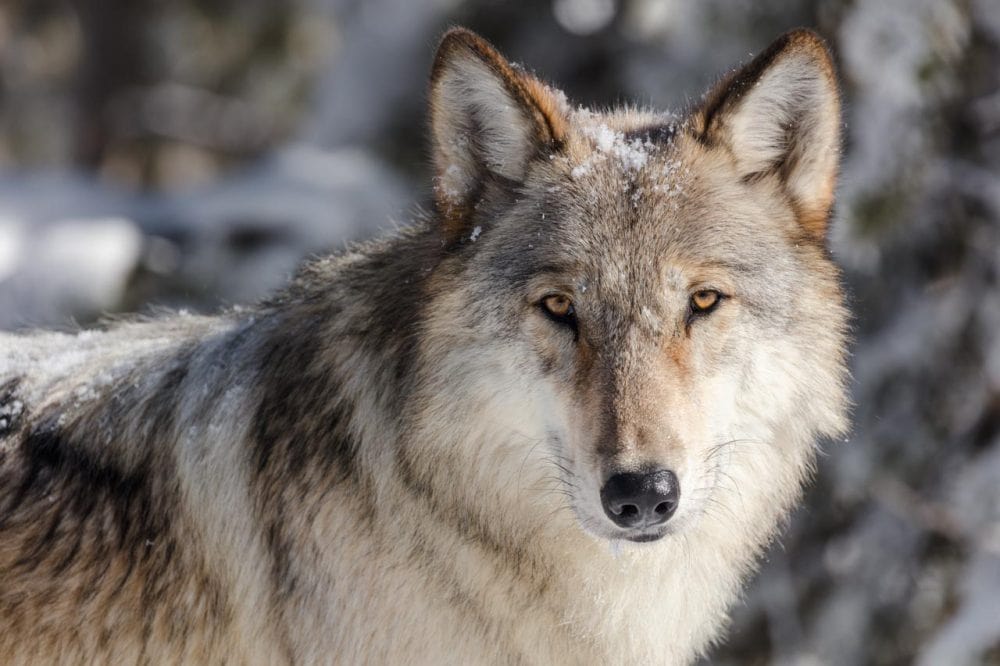
The Greater Yellowstone Ecosystem also includes Wyoming‘s Grand Teton National Park, Yellowstone’s smaller sister park. After the reintroduction of wolves in Yellowstone in the mid-1990’s, it only took a few years before they were seen again in the Jackson Hole Valley.
Some of the wolf packs that roam in and around Yellowstone also venture into Grand Teton National Park. Exact numbers, however, are unknown.
Nonetheless, Grand Teton is and remains one of America’s greatest megafauna refuges. From black and grizzly bears to elk, bison and wolves, all iconic American mammals are present here.
Where to See Wolves in Grand Teton National Park
The best place to see wolves in Grand Teton National Park is Willow Flats, a popular foraging area for moose and elk who graze on respectively willow shrubs and grasses. At dawn and dusk, you might see wolves (and even grizzly bears) hunting there.
More About Grand Teton National Park
- Park Website
- Travel Guide
- Topographic Map
- Best Grand Teton Hikes
- Top Things To Do in Grand Teton National Park
- Accommodation
Isle Royale National Park, Michigan
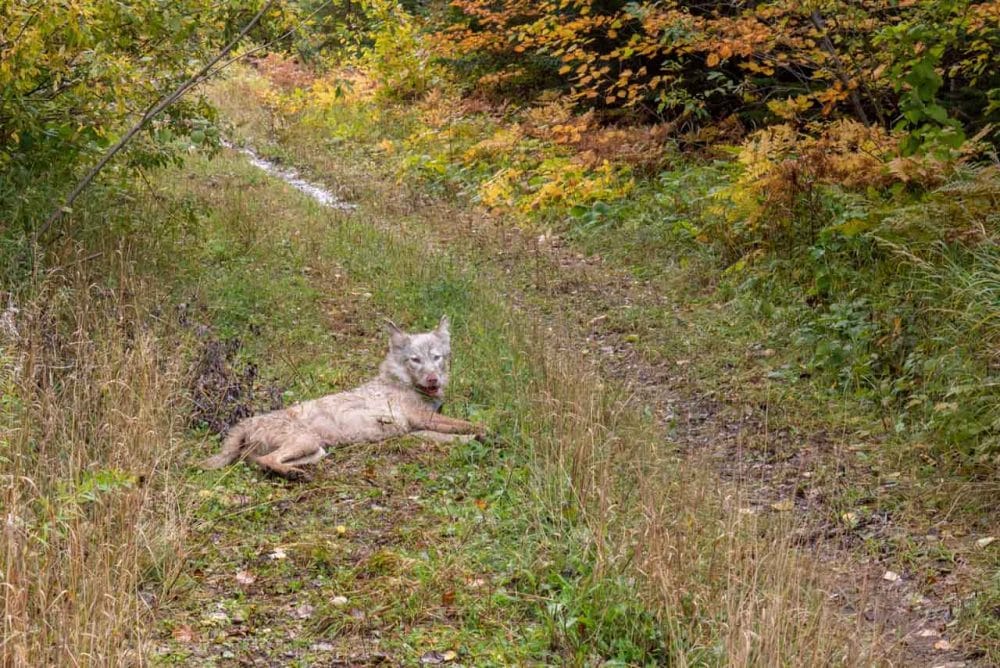
Michigan’s remote Isle Royale National Park is home to both wolves and moose, who are the subjects of the longest-running predator-prey study in the world.
Ever since they arrived on this island in the middle of Lake Superior in 1948 via an ice bridge from mainland Canada, wolves have been Isle Royale’s dominant predator.
The wolf population has, however, fluctuated dramatically, from 50 animals in 1980 to merely 2 from 2016 to 2018. Because of that, the National Park Service has set up a program to reintroduce 20 to 30 wolves on the island.
Where to See Wolves in Isle Royal National Park
You can see wolves all over Isle Royale. Remember, however, that they are shy and elusive, afraid of people and tend to avoid interactions with humans.
Your chances of spotting them are best along hiking trails, lakeshores and in open areas in the woods.
More About Isle Royale National Park
Voyageurs National Park, Minnesota
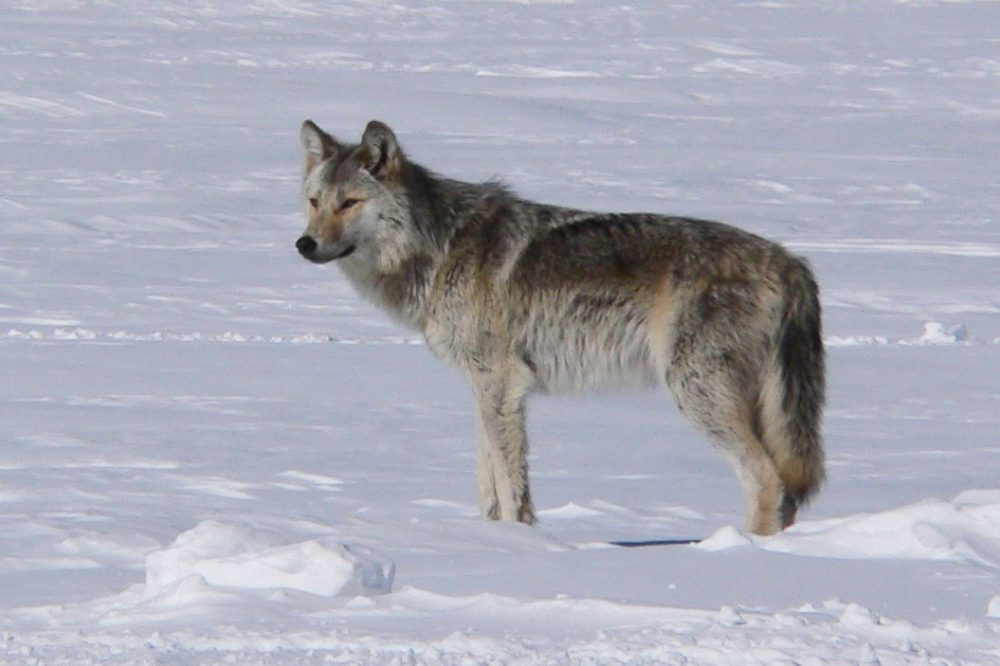
A sprawling collection of lakes, waterways, islands and forests along Minnesota’s border with Canada, Voyageurs National Park is home to 120,000 acres of prime wolf habitat.
The dominant and apex predator in Voyageurs, wolves feed on park’s abundant deer, beavers and moose. They’ve also been observed fishing and even eating blueberries.
Thanks to the remoteness, vastness and quietness of the park, the wolf population in Voyageurs has remained fairly constant since the late-1990’s.
Typically, there are between 30 and 50 wolves in the park, divided into 6 to 9 packs. The territories of these packs overlap at least partially with parts of Voyageurs National Park.
Check Voyageurs Wolf Project for more information about the park’s wolves.
Where to See Wolves in Voyageurs National Park
Your best chances of seeing the Voyageurs wolves are in winter, when they hunt in larger packs and often travel along the shores of the larger lakes. You may also spot them on the entrance roads.
More About Voyageurs National Park
Katmai National Park, Alaska
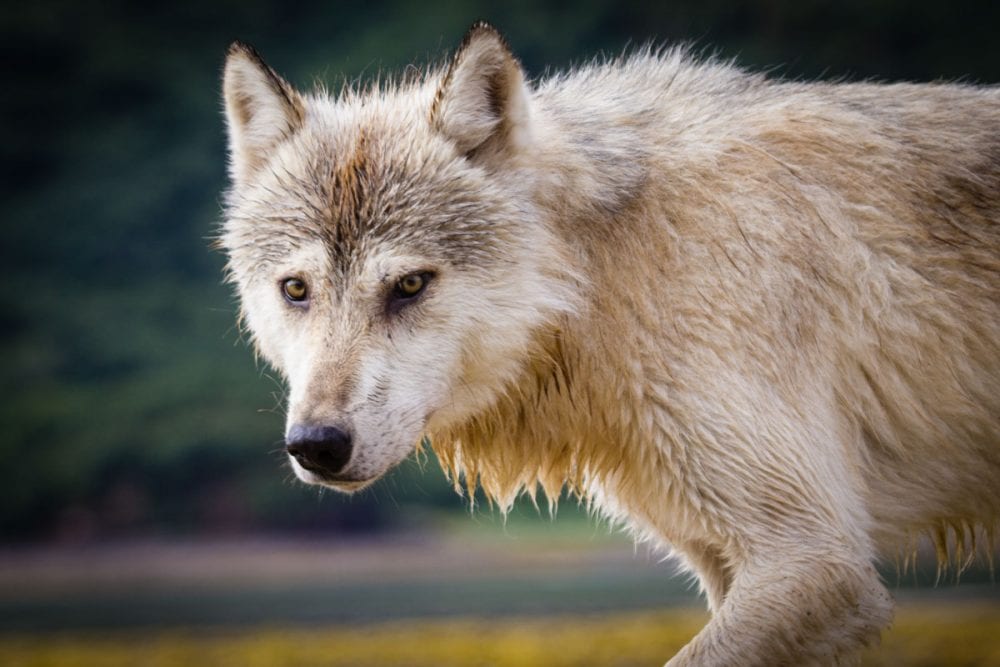
One of the world’s greatest destinations for brown bear viewing, Alaska’s Katmai National Park also has a thriving wolf population.
The enormity of the park, combined with the shyness of wolves and their tendency to cover huge distances, makes observing and researching the animals rather challenging.
This is why, currently, little is known about the comings and goings of the elusive wolves of Katmai National Park. It is, however, certain that there is a healthy population of them within the park.
Where to See Wolves in Katmai National Park
Visitors have seen wolves all over Katmai. One of the best places to see them is the coast, where they hunt harbor seals and sea otters and forage for clams and mussels
Additionally, you may also see wolves at Brooks Camp, where they sometimes fish for salmon alongside the famous brown bears.
More About Katmai National Park
Denali National Park, Alaska
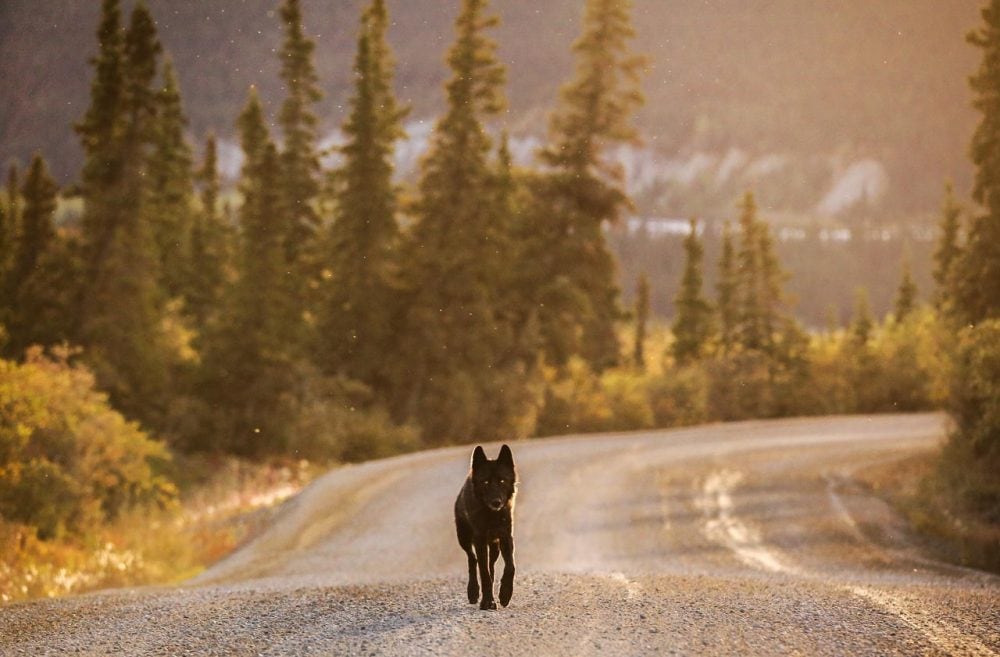
According to the Alaska Wildlife Alliance, no fewer than 40% of people who visit Alaska are hoping to see wild wolves during their trip. And the absolute best place to do that is Denali National Park.
One of the greatest wildlife viewing destinations in Alaska, Denali National Park is home to ten to twelve monitored wolf packs (depending on the season) and over 70 wolves are counted.
Both Denali National Park and nearby Yukon-Charley Rivers National Preserve have been the location of two of the world’s longest-running wolf monitoring programs.
Unfortunately, however, since a wolf hunting and trapping buffer zone along the park’s eastern boundary was eliminated in 2010, the park’s wolf sightings have decreased significantly. While wolves were once almost guaranteed to be spotted, legal hunting on land right outside the park has made them both less abundant and much more cautious.
Yet, Denali National Park does remain one of the best places to see wild gray wolves in the United States.
The national park’s website has all kinds of information about the Denali National Park wolves, including their history, monitoring programs and a wolf sighting index.
Where to See Wolves in Denali National Park
Denali’s Park Road is by far the best and most convenient area to see wolves in the park. Ninety-two miles long, this is the only road in the park, basically the only place regular visitors can go.
Although the first 15 miles are open to private vehicles in summer, the rest of the Park Road is accessible only with park buses. This keeps traffic to a minimum and the animals (relatively) close.
More About Denali National Park
Other Places to See Wolves in America
Wolves once roamed most of North America—the only exception is the Southeastern U.S.—but their range is now limited to a handful of states in the far north of the contiguous United States and Alaska.
Those include Minnesota, Wisconsin, Michigan, Montana, Wyoming, Idaho and the eastern parts of Washington and Oregon. A protected area on the Arizona-New Mexico border also has a number of reintroduced wolves.
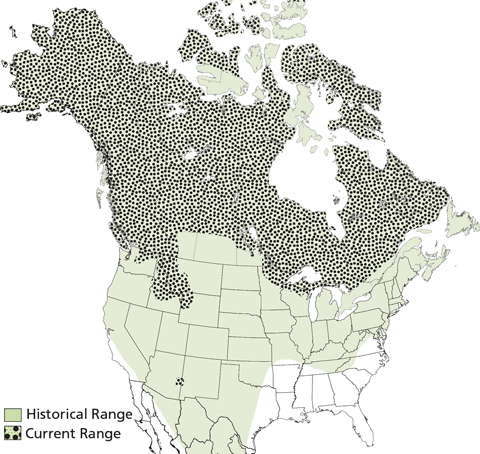
In addition to the national parks with wolves featured above, here are several other places where you might see gray wolves in the wild.
- Gila and Apache National Forests, Arizona and New Mexico
- Boundary Waters Canoe Area Wilderness, Minnesota
- Wallowa Mountains, Oregon
- Glacier National Park, Montana
- Yukon-Charley Rivers National Preserve, Alaska
How to Recognize a Wolf
The largest canine species in America, gray wolves are recognizable by their thick gray coat of fur, which can occasionally also vary from beige to dark red and nearly black.
Males weigh up to 110 pounds, while females weigh up to 90 pounds. An average adult gray wolf is 5 to 6 feet long and about 2.5 feet tall.
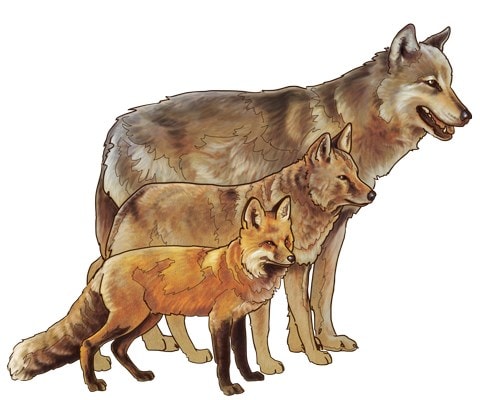
To distinguish it from other canine species, you should look at its ears and muzzle, which are round and less pointed. A wolf’s snout is also noticeably wider than that of its canine cousins.
Additionally, wolves have a shorter torso and longer tail relative to their body than, for example, coyotes and foxes. They have a large head, but their hips and chests are narrow. Their legs are long, their paws big. A wolf’s paw print is 4” x 5”.
For a wealth of other information, statistics and facts about wolves, I recommend you check out this NPS page.
Staying Safe While Visiting National Parks With Wolves

Although wolves are generally not considered dangerous to humans—not a single wolf has ever attacked a person in Yellowstone National Park—you should still treat them as wild animals.
A wolf becomes a potential threat if it gets habituated to human-related food, which includes everything from garbage and left-out campground dinners to livestock.
For your own safety and that of other visitors who come after you, here are several things you can—and should—do.
- Never, ever, feed a wolf or other wild animals. Use food storage boxes while camping and don’t leave any food or garbage unattended.
- Never leave small children alone and unsupervised.
- If you have a dog, always keep it on a leash.
- If you see a wolf, don’t approach it. Stay at least 100 yards (or meters) from wolves.
- During a wolf encounter, never run away. Stop in your tracks, make yourself large and observe how the wolf behaves. Maintain eye contact.
- If a wolf approaches you, yell at it, wave your arms, open your jacket,… Try to appear as big and threatening as possible.
- If a wolf continues to get closer, throw things at it while you keep yelling and waving. As a last resort, deploy your bear spray.
- Whenever possible, hike with a partner or in a group.
- Report unusual wolf behavior and the presence of wolves near a developed area to the appropriate authorities.



